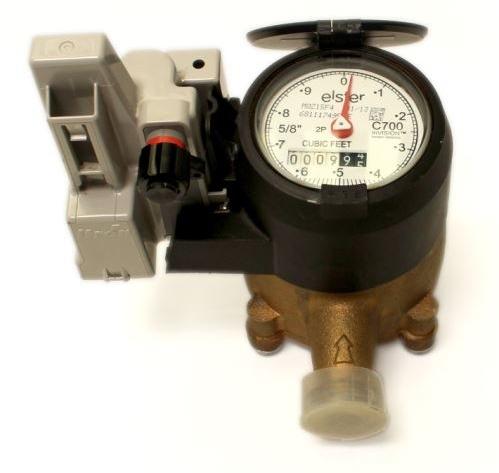What are your ideas regarding 10 Reasons for Low Water Pressure in Your House?

Low tide pressure in your home can be an irritating issue, influencing whatever from bathing to washing recipes. If you're experiencing weak water flow, there are a number of feasible reasons and solutions to discover. In this guide, we'll talk about usual reasons for low water stress and sensible steps to deal with the concern effectively.
Introduction to Low Water Pressure
Low tide stress takes place when the circulation of water from your faucets, showers, and various other fixtures is weaker than common. This can make day-to-day jobs extra tough and much less efficient. Recognizing the root causes of low tide pressure is critical to discovering the appropriate service.
Common Root Causes Of Low Water Pressure
Pipe Obstructions
Gradually, pipelines can end up being obstructed with mineral deposits, sediment, or debris, limiting the flow of water. This is a typical issue in older homes with galvanized steel pipelines.
Rust
Deterioration within pipelines can cause leakages and minimized water pressure. Rust build-up can constrict water circulation, particularly in maturing plumbing systems.
Faulty Pressure Regulators
Pressure regulatory authorities are in charge of maintaining constant water stress in your home. If they malfunction, it can cause low water stress or irregular flow throughout your home.
Municipal Water System Issues
Occasionally, the problem lies outside your home. Local water issues, such as main line leaks or maintenance work, can temporarily minimize water stress in your location.
How to Identify Low Water Stress
Examining Faucets and Components
Beginning by checking the water stress at different faucets and components throughout your home. If the concern is separated to specific areas, it may indicate local problems.
Inspecting Pipes
Inspect visible pipelines for indications of leaks, corrosion, or clogs. Take note of any uncommon audios, such as knocking or rattling pipes, which can show issues within the plumbing system.
Consulting with a Plumber
If you're unable to identify the source of low water stress, think about working with an expert plumber to perform a complete inspection. They can determine underlying concerns and advise suitable options.
Do It Yourself Solutions to Fix Low Water Pressure
Cleaning Aerators and Showerheads
Mineral deposits can collect in aerators and showerheads, lowering water circulation. Get rid of and cleanse these components routinely to enhance water pressure.
Flushing Hot Water Heater
Debris buildup in the water heater can limit circulation and reduce performance. Flushing the tank periodically assists remove sediment and keep optimum performance.
Examining Pressure Regulatory Authority
Make sure that the stress regulator is functioning properly. Readjusting or changing the regulator can help restore correct water stress throughout your home.
Cleaning Clogs in Water Lines
For minor obstructions, attempt making use of a plumbing snake or chemical drainpipe cleaner to clear obstructions in pipelines. Be cautious when using chemicals and comply with safety standards.
When to Call a Professional Plumber
If do it yourself efforts stop working to deal with the concern or if you suspect substantial plumbing problems, it's best to look for support from a licensed plumber. They have the competence and tools to deal with complex concerns securely and successfully.
Preventive Measures to Maintain Water Pressure
Regular Maintenance
Schedule regular maintenance for your plumbing system to prevent problems such as rust, leaks, and blockages. Attending to small troubles early can assist stay clear of even more significant repairs later.
Installing a Pressure Booster
Think about installing a pressure booster pump to enhance water stress in areas with consistently reduced flow. This can be especially useful for multi-story homes or properties with high-demand components.
Surveillance Water Use
Be mindful of water usage behaviors and prevent ill-using the plumbing system. Simple modifications, such as shocking showers and laundry lots, can assist preserve sufficient water stress.
Verdict
Dealing with low tide pressure can be frustrating, however determining the underlying causes and carrying out ideal solutions can recover optimum flow throughout your home. Whether it's cleansing aerators, examining pipelines, or seeking advice from a plumber, taking proactive actions can guarantee a consistent supply of water for your day-to-day needs.
FOUR WAYS TO FIX LOW WATER PRESSURE NOW
Turning on a shower or faucet only to find the water comes out in a sad, slow drizzle is never a good feeling. How exactly are you supposed to wash a pan or take a quick shower when it takes 10 minutes just to rinse off a little soap? The good news is that when your water pressure is bad, there's always a cause: typically one that can be easily fixed. Here are some of the most common causes of low pressure and what you can do to fix the issue:
DEBRIS AND MINERAL DEPOSIT BUILDUPS
If you notice low water pressure from just one or two of the fixtures in your house, the problem likely has to do with debris buildup. Water is full of minerals and other debris, all of which can accumulate in your pipes and on your fixtures. This can cause a blockage that affects how much water flows through. To fix this, try filling a small plastic bag with white vinegar, and use a rubber band to hang it around your showerhead or faucet. Let the head of the fixture soak for a few hours, and the vinegar should loosen the deposits.
WATER LEAKS
Leaks are another common cause of low water pressure. If water is flowing out of your plumbing through a hole or crack before it can reach your fixture, the pressure coming out of the faucet or showerhead will be lower. A plumbing professional is your best bet for finding and repairing a leak in your water supply pipes.
Leaks are another common cause of low water pressure. If water is flowing out of your plumbing through a hole or crack before it can reach your fixture, the pressure coming out of the faucet or showerhead will be lower. A plumbing professional is your best bet for finding and repairing a leak in your water supply pipes.
A VALVE ISSUE
If you have low water pressure throughout your home, check your main shut-off valve to make sure it's completely open. You may also want to see if there's a pressure-reducing valve installed. If there is, have a plumber help you adjust the settings to get the pressure you're looking for.
OTHERS USING WATER
Believe it or not, your low water pressure could be caused by your neighbors. If you notice low pressure at certain times of day, it may be because you and the people living next to you have similar schedules - when everyone is showering at the same time, the pressure will be lower in every home. Low pressure throughout the neighborhood may also be caused by an issue with your municipal water supply. If that's the case, call the supplier to see if they're working on the issue.
https://www.rotorooter.com/blog/water-leaking/low-water-pressure-fixes/

I was made aware of that article on 4 Ways to Troubleshoot Low Water Pressure through a buddy on our other web address. Kindly set aside a second to promote this blog posting if you appreciated it. We cherish your readership.
Get Offer
Comments on “Steps to Resolve Low Water Pressure in Your Home”